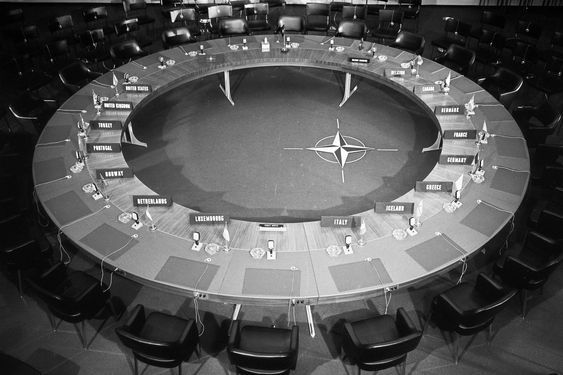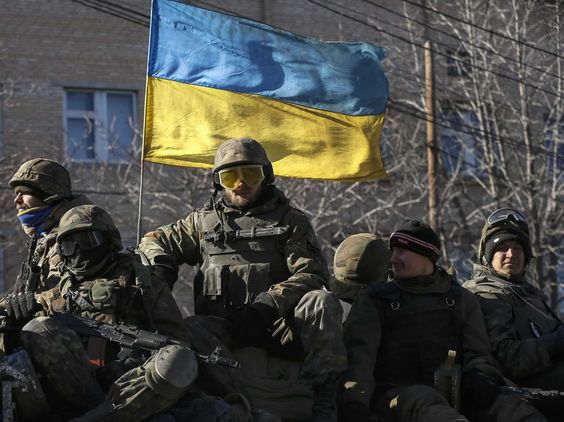What is the Difference Between NATO and The UN
In today’s interconnected world, global organizations play a pivotal role in maintaining peace, security, and cooperation among nations. Among these organizations, two prominent entities stand out: NATO (North Atlantic Treaty Organization) and the UN (United Nations). While both NATO and the UN aim to foster international collaboration and resolve conflicts, they operate under distinct mandates and structures. Let’s delve into the differences between these two influential organizations.
Origin and Purpose
NATO
NATO was established in 1949, primarily as a defense alliance among North American and European nations. Its primary purpose was to safeguard the member states against the threat of Soviet expansion during the Cold War.
UN
The United Nations came into existence in 1945, shortly after World War II, with the primary goal of maintaining international peace and security, promoting human rights, fostering economic development, and providing humanitarian aid. Also, read about What is global security
Membership
NATO
Membership in NATO is limited to sovereign states that are willing to uphold the principles of the North Atlantic Treaty. As of 2024, NATO consists of 30 member countries.
UN
The UN, in contrast, has a broader membership, comprising 193 member states. While the majority of countries in the world are part of the UN, some sovereign states have chosen not to join.
Geographic Scope
NATO
NATO’s focus is primarily on the North Atlantic region, although its activities and partnerships extend beyond this area. The organization’s core mission is to ensure the collective defense of its member states.
UN
The United Nations operates on a global scale, with its reach spanning across continents and regions. It addresses a wide range of issues, including peacekeeping, human rights, environmental sustainability, and global health.
Decision-Making Process
NATO
Decision-making within NATO is based on consensus among member states. Each member has an equal say in the alliance’s policies and actions.
UN
In the UN, decision-making involves various organs and bodies, including the General Assembly, the Security Council, and specialized agencies. The Security Council, composed of five permanent members and ten rotating members, holds primary responsibility for maintaining international peace and security. Discover more about What cultural day

Military Role
NATO
NATO has a strong military component and is known for its collective defense mechanism. The alliance conducts joint military exercises, maintains rapid reaction forces, and engages in crisis management operations.
UN
While the UN has a peacekeeping mandate, it does not maintain its standing army. Instead, it relies on contributions from member states to support peacekeeping missions authorized by the Security Council.
Enforcement Powers
NATO
NATO has the authority to take collective military action in response to an armed attack against any of its member states. This principle is enshrined in Article 5 of the North Atlantic Treaty, commonly known as the collective defense clause.
UN
The UN Charter prohibits the use of force except in cases of self-defense or when authorized by the Security Council to maintain or restore international peace and security. The Security Council can authorize military action, including sanctions and peacekeeping operations, to address threats to peace.
Focus of Operations
NATO
NATO’s operations primarily revolve around collective defense, crisis management, and cooperative security measures aimed at deterring aggression and promoting stability in the Euro-Atlantic area.
UN
The UN’s operations are diverse and encompass a wide range of issues, including conflict prevention, peacekeeping, disarmament, humanitarian assistance, and sustainable development.
Funding
NATO
Funding for NATO’s activities is shared among member states, with each country contributing a percentage of its GDP to support the alliance’s budget and operations.
UN
The UN’s budget is funded through assessed contributions from member states, calculated based on their relative wealth and capacity to pay. Additionally, voluntary contributions from member states and other sources support specific UN programs and initiatives.
Membership Criteria
NATO
To join NATO, a country must meet certain criteria, including a commitment to democratic governance, respect for human rights, and the rule of law. Prospective members undergo a process of accession and must receive approval from existing member states.
UN
Membership in the UN is open to all sovereign states that accept the obligations outlined in the UN Charter and are willing to contribute to the organization’s objectives and activities.

Role in Conflict Resolution
NATO
NATO has played a significant role in conflict resolution through its peacekeeping missions, crisis management efforts, and diplomatic initiatives aimed at de-escalating tensions and promoting dialogue among parties in conflict.
UN
The UN serves as a forum for diplomatic negotiations and conflict resolution, facilitating dialogue among member states and providing a platform for mediation, arbitration, and peacebuilding efforts.
Legal Framework
NATO
NATO operates under its founding treaty, the North Atlantic Treaty, which outlines the alliance’s objectives, principles, and collective defense commitments.
UN
The UN Charter serves as the legal framework for the organization, establishing its principles, structure, and functions, as well as the rights and obligations of member states.
Role of Secretary-General
NATO
The Secretary-General of NATO is responsible for representing the alliance, coordinating its activities, and serving as a diplomatic envoy. The Secretary-General is appointed by member states and serves a renewable term.
UN
The Secretary-General of the UN is the chief administrative officer of the organization, responsible for overseeing its operations, implementing its policies, and representing it on the world stage. The Secretary-General is appointed by the General Assembly upon the recommendation of the Security Council.
Decision-Making Mechanisms
NATO
Decision-making in NATO involves consultations and negotiations among member states, with consensus being the preferred method for reaching agreements on key issues.
UN
The UN employs various decision-making mechanisms, including voting procedures in the General Assembly and the Security Council, where major decisions require the support of a majority of member states or a specific number of Security Council members, including all permanent members.
Role in Humanitarian Assistance
NATO
NATO has provided humanitarian assistance in response to natural disasters and other emergencies, leveraging its military capabilities to deliver aid and support relief efforts.
UN
The UN plays a central role in coordinating humanitarian assistance and providing aid to countries affected by conflicts, disasters, and other crises through its specialized agencies and relief programs.
Accountability Mechanisms
NATO
NATO members are accountable to each other and to the alliance’s governing bodies for their actions and commitments under the North Atlantic Treaty.
UN
The UN holds member states accountable for their adherence to the principles of the UN Charter and international law through mechanisms such as the International Court of Justice and the UN Human Rights Council.
Conclusion
In conclusion, while both NATO and the UN share the overarching goal of promoting peace and security on a global scale, they operate under distinct mandates, structures, and decision-making processes. NATO focuses primarily on collective defense and security cooperation among North American and European nations, while the UN addresses a broader range of issues and operates as a forum for international cooperation and conflict resolution. Understanding the differences between these two organizations is essential for navigating the complex landscape of international relations and diplomacy.
FAQs
1. Is NATO part of the United Nations?
No, NATO is a separate organization from the United Nations. While both entities collaborate on various issues, they have distinct missions and structures.
2. Can a country be a member of both NATO and the UN?
Yes, many countries are members of both NATO and the UN. Membership in one organization does not preclude membership in the other.
3. What is the relationship between NATO and the European Union (EU)?
NATO and the EU are separate entities, but they share common goals in promoting stability and security in Europe. They cooperate on issues of mutual interest, such as crisis management and defense capabilities.
4. How does NATO contribute to international security?
NATO contributes to international security through its collective defense mechanism, military capabilities, and partnerships with other countries and organizations.
5. What is the role of the UN Security Council in maintaining peace and security?
The UN Security Council is responsible for addressing threats to international peace and security, authorizing peacekeeping missions, imposing sanctions, and making recommendations for conflict resolution.
